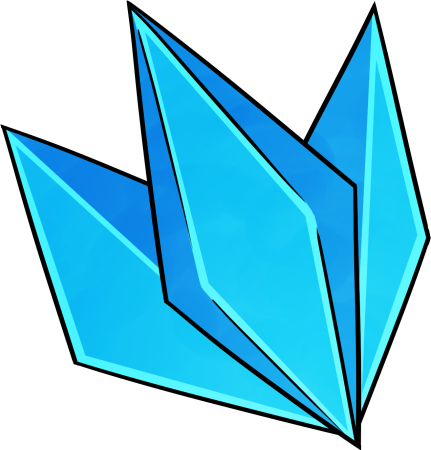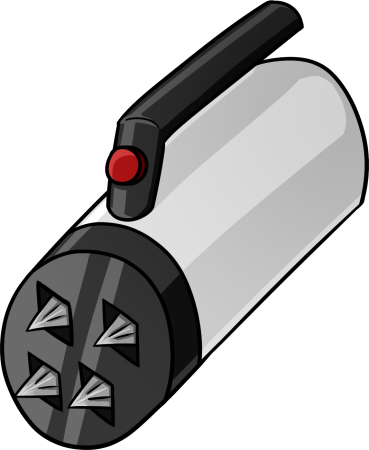
It’s one of the informational pamphlets that the front desk staff in the main building of Headquarters give out to new research team members who have just landed on this planet. A quick skim shows that while it’s mostly written in the typical Intergalactic Alliance fashion, it’s very clearly also an internal document that they probably don’t want anyone outside of the team to see.
While it took a long time to discover and understand how the unique substance dubbed as Chroma functions, the amount of time to create methods to manufacture it was considerably less in comparison. During this process, much was learned about its unusual and fascinating properties. Today, the Planet Chroma Research Headquarters has its own facility to safely and responsibly manufacture Chroma for use in the care and study of life found on the planet.
At a first glance, manufactured Chroma appears crystal-like, but what is being seen is just its surface, which is mostly aptly described as a shell. This shell is a translucent, white colour, and is somewhat brittle, but is typically not prone to breaking unless dropped, punctured, or crushed with some amount of force. The colour of a Chroma is determined by the colour of the dense, inodorous gas contained within.

The fauna and flora of this planet are imbued with a unique substance that is vital to their growth, but their dependency on this substance lessens as they age. Raising animals in captivity proved especially troublesome, with all early specimens ending in the same story: they were fine at first, but over time would grow weak and pass away as if they were malnourished, despite being fed and cared for. Though this initial failure was both a major setback for research and saddening, many argued that due to the discoveries it led to, it was likely an unavoidable outcome.
Using the abundant resources on this planet and modern technology, this substance can be isolated, taking the form of a viscous liquid. Its colour is determined by the types of resources it was extracted from. Over a dozen varieties exist, but some are harder to extract than others. This liquid can be processed by being heated and exposed to high pressure, where it will gradually change into the distinctive form that is referred to as a Chroma.

A byproduct in the form of a less potent, thinner version of the extract is made during the manufacturing process. Fortunately, this byproduct is immensely useful, and thus is collected to be further processed into various different serums. While the strength of a Chroma is too much for a very young specimen, specialised serums made from this byproduct are perfect for helping them grow and develop without overwhelming them.
A simple to use tool was designed to be used to easily puncture small holes into the shell of a Chroma without posing the risk of the shell completely shattering. Once punctured, the gas inside will slowly rise out in the form of opaque, wispy bubbles. If a punctured Chroma is placed near an animal, they will instinctively seek it out. This behaviour is thought to derive from when, in the wild, these same animals are attracted to wisps of a substance dubbed essence. Essence has been found to be similar in composition to that of the gas that forms inside of manufactured Chroma.

Once it is empty, the shell of a Chroma is to be placed either in a field researcher’s designated shell disposal bin, or any of the same such bins that are placed throughout Headquarters. These shells are repurposed by crushing them and using them in the soil for native plants grown in the laboratories. They will gradually break down in moist soil, providing nutrients to the plants.
It is imperative that all personnel ensure they are doing their part to allow the continued responsible manufacturing, usage, and disposal of Chroma. This is not just to increase efficiency and minimise waste, but to also show with our actions that research on this planet is not being done with no regard for its unique environment, or for the wrong reasons.